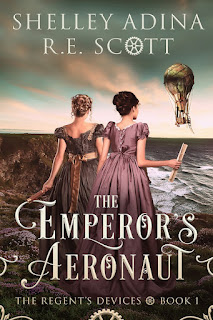I wish I were going somewhere warm where one can unironically drink things with slices of pineapple and little umbrellas stuck on top! It's the time of year when spring seems so close, but still so far...an opinion shared by Queen Victoria. Enjoy!
* * * * *
Well, not quite. But sort of. :)
I’m lucky enough to be looking forward to a visit to warmer climes in
the near future—when you live in the chilly north, a few days spent in a
place where it’s not necessary to wear heavy down coats is a Very Good
Thing.
I’m not the only one to think so. Queen Victoria started taking an
annual holiday somewhere in sunny southern Europe, usually for six or
seven weeks from the beginning of March to mid-to-late April. Her first
trip, in 1879, was shortly after the death of her daughter, Princess
Alice; the Queen felt that she needed a complete change of scene, and
decided it was high time she visited Italy, which she had never seen.
She was lent a villa, Villa Clara, at Baveno, on Lake Maggiore, which
though close to the Alps has a mild, Mediterranean climate year round.

The Queen was delighted with her decision. The scenery was gorgeous
(though she invariably compared it to Scotland), so she spent a lot of
time sketching and painting watercolors, went boating on the lake all
the way up to its end in Switzerland, visited Milan to see the artwork
(not a success as she was mobbed while visiting the cathedral). It
whetted her appetite for more travels, and three years later, she went
to the French Riviera, a trip that eventually became an annual event.

Her first visit there was to Menton, where she saw the Mediterranean for
the first time. Once again she compared the scenery to Scotland, but as
anything that reminded her of Scotland was definitely a good thing, it
was high praise indeed. She was an indefatigable sightseer, taking
little trips to Monte Carlo (though not to gamble) and other places,
with her English coachman and Scottish servant, John Brown, in full
Highland regalia (how the sight must have bemused the French!)…perhaps
to visit a quaint nunnery, or a pottery factory, or to have a picnic in a
secluded spot by the side of the road. In future years she stayed at
Hyères, Grasse, and Cannes before finally settling on the Hotel
Excelsior Regina (it added the “Regina” to its name with the Queen’s
permission), in Cimiez, Nice. She always travelled “incognito” as the
Countess of Balmoral, which of course fooled nobody but permitted her to
avoid making visits of state—this was, after all, supposed to be a
vacation. Family members descended on her for visits while on their own
winter vacations, so that at times the poor Queen was quite exhausted
from entertaining.
Her last visit was in 1899; the Boer War kept her home the following
spring, which was her last before her death in January 1901. I’m sorry
she had to miss that last year; she took great delight in her annual
visits south, away from “the sunless north”. I know I’ll enjoy mine!















